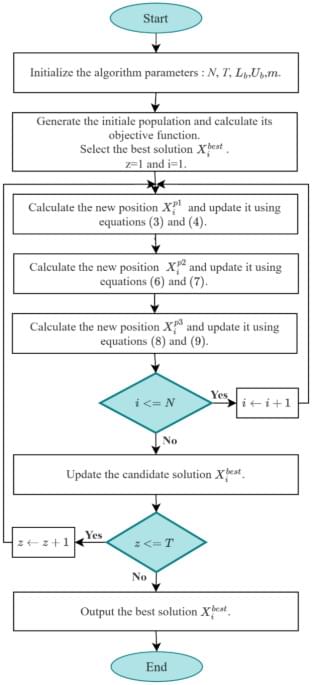Nearly invisible, seaweed-based electronic skin precisely monitors pulse pressure and temperature, rivaling medical equipment in accuracy with its innovative bioelectronic design.



Theories of computation and theories of the brain have close historical interrelations, the best-known examples being Turing’s introspective use of the brain’s operation as a model for his idealized computing machine (Turing 1936), McCulloch’s and Pitts’ use of ideal switching elements to model the brain (McCulloch and Pitts 1943), and von Neumann’s comparison of the logic and physics of both brains and computers (von Neumann 1958).


Nanomaterials, with their distinctive physical and chemical properties, hold significant promise for revolutionizing the housing construction industry. By enabling the development of stronger, more durable, efficient, and sustainable structures, nanotechnology offers solutions to challenges such as climate change and global urbanization.
The use of nanomaterials in construction began in the mid-1980s with the advent of carbon-based structures. Since then, their application has become more widespread, driving innovations in the sector. Today, advances in nanotechnology are leading to the creation of increasingly sophisticated, selective, and efficient nanomaterials, broadening the scope of construction capabilities.
This study explored the application of various nanomaterials—titanium dioxide, carbon nanotubes (CNTs), nanosilica, nanocellulose, nanoalumina, and nanoclay—in residential construction. These materials were chosen for their potential to enhance the structural integrity, thermal performance, and overall functionality of building materials used in housing.


Biological neural networks demonstrate complex memory and plasticity functions. This work proposes a single memristor based on SrTiO3 that emulates six synaptic functions for energy efficient operation. The bio-inspired deep neural network is trained to play Atari Pong, a complex reinforcement learning task in a dynamic environment.


The Driving Training Based Optimization (DTBO) algorithm, proposed by Mohammad Dehghani, is one of the novel metaheuristic algorithms which appeared in 202280. This algorithm is founded on the principle of learning to drive, which unfolds in three phases: selecting an instructor from the learners, receiving instructions from the instructor on driving techniques, and practicing newly learned techniques from the learner to enhance one’s driving abilities81,82. In this work, DTBO algorithm is used, due to its effectiveness, which was confirmed by a comparative study83 with other algorithms, including particle swarm optimization84, Gravitational Search Algorithm (GSA)85, teaching learning-based optimization, Gray Wolf Optimization (GWO)86, Whale Optimization Algorithm (WOA)87, and Reptile Search Algorithm (RSA)88. The comparative study has been done using various kinds of benchmark functions, such as constrained, nonlinear and non-convex functions.
Lyapunov-based Model Predictive Control (LMPC) is a control approach integrating Lyapunov function as constraint in the optimization problem of MPC89,90. This technique characterizes the region of the closed-loop stability, which makes it possible to define the operating conditions that maintain the system stability91,92. Since its appearance, the LMPC method has been utilized extensively for controlling a various nonlinear systems, such as robotic systems93, electrical systems94, chemical processes95, and wind power generation systems90. In contrast to the LMPC, both the regular MPC and the NMPC lack explicit stability restrictions and can’t combine stability guarantees with interpretability, even with their increased flexibility.
The proposed method, named Lyapunov-based neural network model predictive control using metaheuristic optimization approach (LNNMPC-MOA), includes Lyapunov-based constraint in the optimization problem of the neural network model predictive control (NNMPC), which is solved by the DTBO algorithm. The suggested controller consists of two parts: the first is responsible for calculating predictions using a neural network model of the feedforward type, and the second is responsible to resolve the constrained nonlinear optimization problem using the DTBO algorithm. This technique is suggested to solve the nonlinear and non-convex optimization problem of the conventional NMPC, ensure on-line optimization in reasonable time thanks to their easy implementation and guaranty the stability using the Lyapunov function-based constraint. The efficiency of the proposed controller regarding to the accuracy, quickness and robustness is assessed by taking into account the speed control of a three-phase induction motor, and its stability is mathematically ensured using the Lyapunov function-based constraint. The acquired results are compared to those of NNMPC based on DTBO algorithm (NNMPC-DTBO), NNMPC using PSO algorithm (NNMPC-PSO), Fuzzy Logic controller optimized by TLBO (FLC-TLBO) and optimized PID controller using PSO algorithm (PID-PSO)95.

This post marks my 22nd for Evolution News in as many months. I began by advocating that the notion of purpose be established as a scientific concept. I hope that the reasons I have offered over the past two years have been convincing.
I ended my last post with what many would consider a radical claim. That is, we must further recognize, on the basis of powers ontology, aka dispositionalism, that the living state undeniably manifests the power of purpose, and that this can only come from its immanent property of intentionality.
Purpose and intentionality permeate and in fact define the living state, in contrast to the inanimate. If you dissect any organism or any cell or any organelle within any cell or organism you will only find parts that contribute to the function of the whole. One might even say that within life, there is nothing else except purpose.
